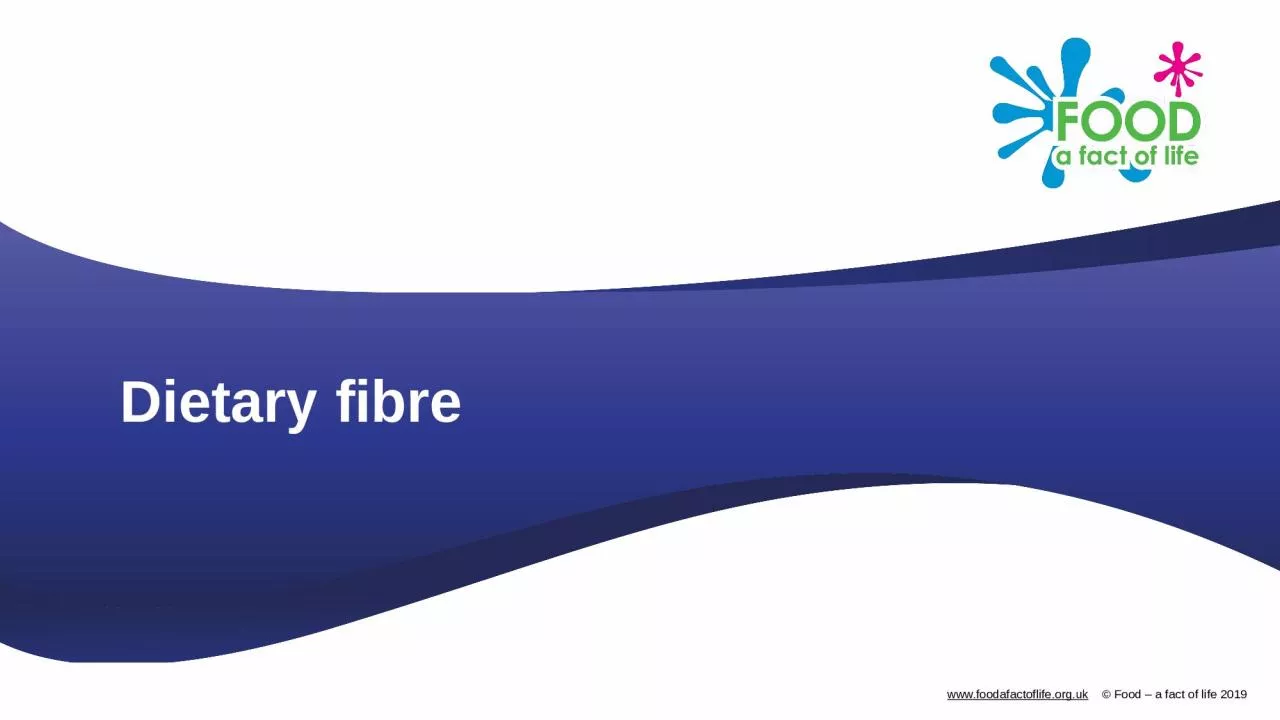

Dietary fibre is a diverse group of carbohydrate found almost exclusively in plants including nonstarch polysaccharides such as cellulose pectin and lignin Unlike other types of carbohydrate these are not absorbed in the small intestine to provide ID: 1009059
Download Presentation The PPT/PDF document "Dietary fibre Dietary fibre" is the property of its rightful owner. Permission is granted to download and print the materials on this web site for personal, non-commercial use only, and to display it on your personal computer provided you do not modify the materials and that you retain all copyright notices contained in the materials. By downloading content from our website, you accept the terms of this agreement.
1. Dietary fibre
2. Dietary fibreDietary fibre is a diverse group of carbohydrate found almost exclusively in plants, including non-starch polysaccharides such as cellulose, pectin and lignin. Unlike other types of carbohydrate, these are not absorbed in the small intestine to provide energy. Some fibre can be fermented in the large intestine by gut bacteria, producing short chain fatty acids and gases (methane, hydrogen and carbon dioxide). Dietary fibre provides 2kcal/8kJ per gram on average.
3. Sources of dietary fibreComponents of dietary fibre are found in different proportions in food, therefore it is important to eat a variety of fibre-containing foods. Dietary fibre is found in: wholegrain cereals and cereal products; beans; lentils; fruit and vegetables; nuts and seeds.
4. Fibre in the dietDietary fibre helps to:reduce the risk of heart disease, diabetes and some cancers;Help with weight control;bulk up stools and make waste move through the digestive tract more quickly;prevent constipation;improve gut health.
5. How much fibre do we need?Most people do not eat enough dietary fibre.The recommended average intake for dietary fibre is 30g per day for adults. Children need proportionately less.Current adult intake is around 19g per day on average, less that the recommended levels for a 5 year old.Age (years)Recommended intake of fibre (g/day)2-5 years15 grams5-11 years20 grams11-16 years25 grams17+ years30 grams
6. Fibre on food labelsEuropean regulations on nutrition and health claims state that a product claiming to be a ‘source of’ fibre should contain at least 3g of dietary fibre per 100g, and for a product which contains at least 6g of dietary fibre per 100g, this can be labelled as ‘high in’ fibre.https://ec.europa.eu/food/safety/labelling_nutrition/claims/nutrition_claims_en
7. How can fibre be increased in the diet?Choose a high fibre breakfast cereal e.g. bran flakes, or porridgeGo for wholemeal or granary breads instead of white breadChoose wholegrains like wholewheat pasta, bulgur wheat or brown riceGo for potatoes with skins e.g. baked potato or boiled new potatoesFor snacks try fruit, vegetable sticks, rye crackers, oatcakes, unsalted nuts or seedsInclude plenty of vegetables with meals – either as a side dish or added to sauces, stews or curriesAdd pulses like beans, lentils or chickpeas to stews, curries and saladsHave some fresh or dried fruit, or fruit canned in natural juice for dessert.
8. Dietary fibreFor further information, go to:www.foodafactoflife.org.uk